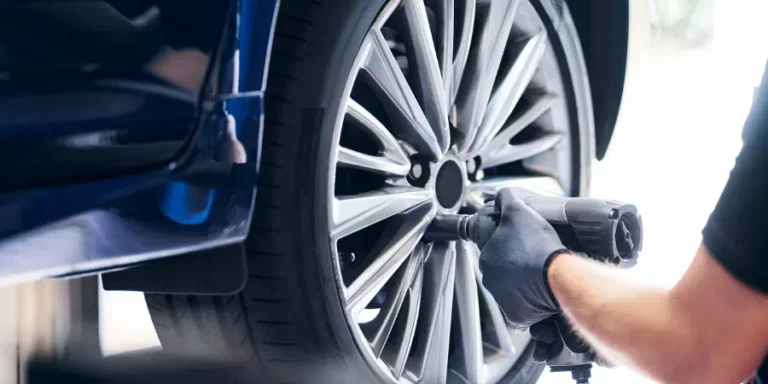In the intricate world of automotive engineering, the wheel end is a crucial but often overlooked component. Vital for vehicle performance, safety, and reliability, wheel ends play a significant role in the overall functioning of any automobile. This article delves into the essential aspects of wheel ends, exploring their components, functions, advancements, and maintenance considerations.
What is a Wheel End?
A wheel end refers to the assembly located at the end of a vehicle’s axle, where the wheel and tire are mounted. This assembly includes several key components:
- Wheel Hub: The central part where the wheel attaches. It houses the wheel bearings and provides a mounting point for the brake components.
- Bearings: These are crucial for smooth wheel rotation with minimal friction. Common types include ball bearings and tapered roller bearings, designed to withstand significant loads and high speeds.
- Brakes: The braking system, which can be either disc or drum brakes, is integrated into the wheel end. Disc brakes, consisting of rotors and calipers, are more common in modern vehicles due to their superior performance.
- Seals and Fasteners: Seals protect internal components from contaminants like dirt and moisture, while fasteners secure the assembly’s various parts, ensuring structural integrity.
The Role of Wheel Ends in Vehicle Performance
Wheel ends are integral to several aspects of vehicle performance:
- Handling and Stability: Properly functioning wheel end components, including bearings and suspension parts, ensure smooth and predictable responses to steering inputs, enhancing driving dynamics and safety.
- Braking Efficiency: The brake components within the wheel end directly impact braking performance. High-quality rotors, calipers, and pads ensure better stopping power and heat dissipation, reducing brake fade during intense use.
- Load Bearing: Wheel ends support a significant portion of the vehicle’s weight, especially during acceleration, deceleration, and cornering. Durable and well-maintained wheel ends maintain vehicle balance and prevent uneven tire wear.
Advancements in Wheel End Technology
Innovations in automotive technology have led to significant advancements in wheel end systems:
- Integrated Wheel End Systems: Modern vehicles increasingly use integrated systems, combining the hub, bearing, and ABS sensor into a single unit. This integration simplifies assembly, reduces weight, and enhances reliability.
- Advanced Materials: The use of lightweight alloys and high-strength composites has improved the durability and performance of wheel end components. These materials offer superior resistance to wear and corrosion while reducing overall vehicle weight for better fuel efficiency.
- Electronic Stability Control (ESC): ESC systems rely on sensors within the wheel end to monitor wheel speed and detect traction loss. By selectively applying brakes to individual wheels, ESC helps maintain vehicle stability during challenging driving conditions, reducing the risk of skidding or rollovers.
- Condition Monitoring: Advances in sensor technology have enabled real-time condition monitoring of wheel end components. Sensors detect early signs of wear or damage, allowing for proactive maintenance and reducing the likelihood of catastrophic failures.
- Electric and Hybrid Vehicles: The rise of electric and hybrid vehicles has brought new challenges and opportunities for wheel end technology. These vehicles often feature regenerative braking systems, requiring specialized components to capture and store energy efficiently during braking.
Maintenance and Safety Considerations
Proper maintenance of wheel end components is essential for ensuring vehicle safety and longevity. Key maintenance tasks include:
- Bearing Lubrication: Ensuring that wheel bearings are adequately lubricated reduces friction and prevents premature wear. Some modern vehicles use sealed bearings that are maintenance-free, but older models may require periodic greasing.
- Brake Inspections: Regularly checking brake pads, rotors, and calipers for wear and damage is crucial for maintaining effective braking performance. Worn or damaged brake components should be replaced promptly.
- Seal Integrity: Inspecting seals for leaks or damage helps prevent contaminants from entering the wheel end assembly, protecting internal components from wear and corrosion.
- Torque Settings: Ensuring that all fasteners are correctly torqued prevents components from becoming loose and compromising the wheel end’s structural integrity.
Conclusion
Wheel end technology may not always be the center of automotive discussions, but its importance is undeniable. As a critical interface between the vehicle and the road, the wheel end plays a vital role in ensuring performance, safety, and reliability. Ongoing advancements and proper maintenance are key to the evolution and effectiveness of wheel end systems. Recognizing and understanding this essential component highlights the complexities and innovations that keep vehicles running smoothly and safely on the road.
Source from My Car Heaven
Disclaimer: The information set forth above is provided by mycarheaven.com independently of Alibaba.com. Alibaba.com makes no representation and warranties as to the quality and reliability of the seller and products. Alibaba.com expressly disclaims any liability for breaches pertaining to the copyright of content.




